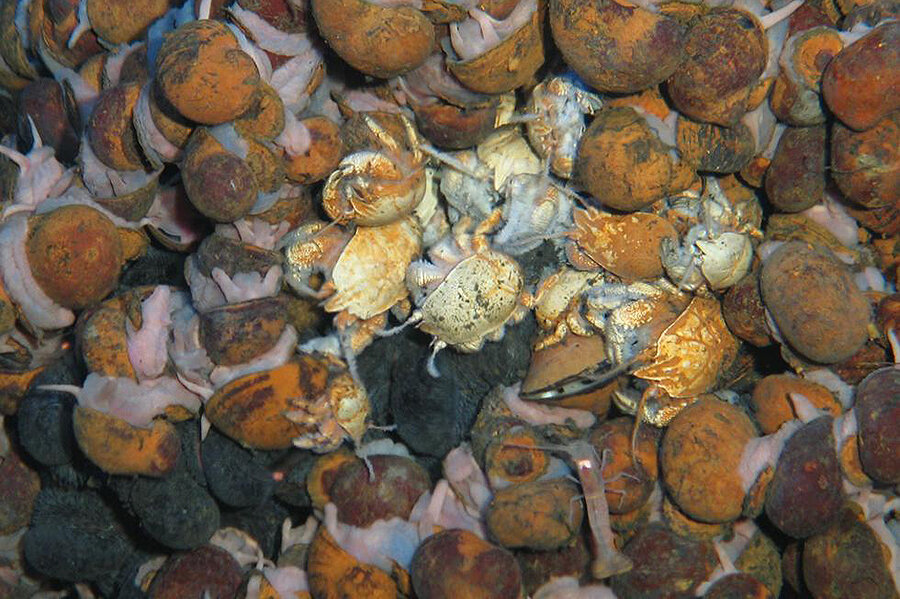Hairy crabs and other new creatures discovered at underwater 'Dragon's Breath'
Hairy-chested crabs, rare snails, and deep-sea worms are among a half-dozen new species recently discovered in the Indian Ocean.
A team of scientists from the University of Southampton announced the six new marine species Friday after studying the undersea hot springs of Longqi, or “Dragon’s Breath,” located 1.7 miles beneath the ocean’s surface and more than 1,200 miles southeast of Madagascar.
Led by Jon Copley, the researchers studied more than a dozen hydrothermal vents, also called spires or vent chimneys, some of which spiral at two stories above the ocean floor and emit hot fluids and minerals. The ever-plentiful “mineral-laden water” flowing out of the vent chimneys make the area an ideal habitat for various sea life – and, more recently, an ideal location for seafloor mining of copper and gold.
Dr. Copley and his fellow researchers suggest that the mining in the Longqi area should be put on hold until further analysis of the area – and the species that live there – can be done.
“Our results highlight the need to explore other hydrothermal vents in the southwest Indian Ocean and investigate the connectivity of their populations, before any impacts from mineral exploration activities and future deep-sea mining can be addressed,” said Copley in a press release.
The researchers also found a number of species that live at other hydrothermal vent sites, even thousands of miles away in the Antarctic and Pacific. The six newly discovered species may also have a broader range, the team said.
“We can be certain that the new species we’ve found also live elsewhere in the southwest Indian Ocean, as they will have migrated here from other sites,” Copley said, “but at the moment no-one really knows where, or how well-connected their populations are with those at Longqi.”
The International Seabed Authority, the organization responsible for issuing contracts to companies interested in seafloor mining, recognizes their responsibility to “prevent damage to the flora and fauna (that is, the biodiversity) of the marine environment.” To protect these areas’ biodiversity, the ISA requires contractors to gather environmental baseline data at each step of the exploration process.
“Deep sea mining is largely like most mining,” Andrew Thurber, a researcher at Oregon State University's College of Earth, Ocean and Atmospheric Sciences, told Vice's Motherboard in 2014:
"It is a destructive process that is used to get resources that are either wanted or needed. It's very easy to say it is 'bad' but I, like everyone else, use materials that come from a mining operation and so rather than just say no, what is more important is to understand both the inherent risk to the ecosystem but also the other services that the ecosystem provides."
In their paper published Wednesday, however, the team of nine scientists say “further exploration is needed to determine whether the faunal assemblage at Longqi is typical of vent fields on this very slow to ultraslow-spreading ridge.” Until such information is available, the Longqi vents meet the criteria for an “Ecologically or Biologically Sensitive Area” under the UN Convention of Biological Diversity, say the researchers, and warrant protection.







